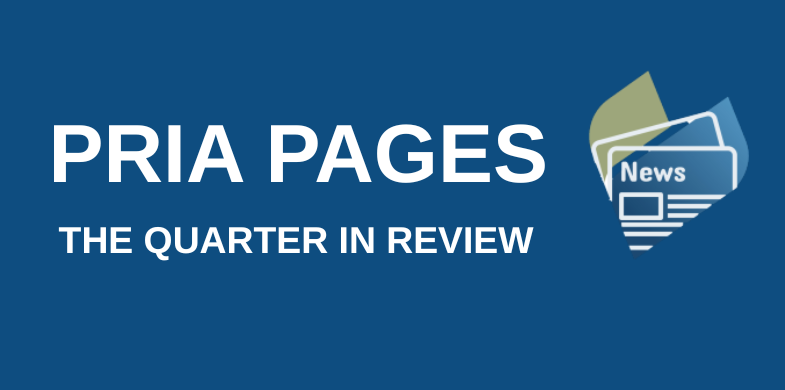Bridging the Gap: Aligning Market Access with Commercial Success
Why KOL Engagement is Crucial for Market Access
By Tracy Davis MS, RD, Director of Market Access
Bringing a medical device to market is about more than just innovation, it’s about building trust, credibility, and alignment with real-world clinical needs. One of the most powerful ways to do that is by engaging Key Opinion Leaders (KOLs) early in the market access journey.
KOLs are the leaders other healthcare professionals turn to for guidance. They publish research, give talks at major conferences, and often sit on committees that influence treatment guidelines and healthcare policy. Their voices matter to clinicians, health systems, and payers.
These individuals, often respected physicians, researchers, or healthcare professionals, play a critical role in shaping how new therapies are perceived, adopted, and reimbursed. Their insights can help guide everything from clinical strategy to payer conversations. Payers also appreciate insights from their own in-network physicians and their patient populations.
Why Engage KOLs Early?
Getting KOLs involved early in the process isn’t just beneficial, it’s strategic. Their support can provide a critical credibility boost, helping validate the clinical and economic value of your product in the eyes of healthcare providers and payers. KOLs also play an important role in influencing policy, often contributing to the development of formularies, treatment guidelines, and reimbursement frameworks. When a KOL believes in your device, they can serve as a powerful advocate, helping to build awareness and momentum within the medical community. Just as importantly, their early feedback can improve your product, offering insights that make it more relevant, practical, and aligned with the real-world needs of both clinicians and patients.
So, how does KOL engagement work and why is it so essential?
A thoughtful approach makes all the difference. Here are the steps to successful KOL engagement:
1. Identify the Right KOLs
Start by identifying the voices that matter in your therapeutic area. Look for individuals who are well-published, frequently consulted, or involved in professional societies and advisory boards.
2. Define Clear Goals
Are you looking for clinical validation? Support with payer discussions? Product feedback? Knowing your goals helps shape the right kind of relationship.
3. Build Meaningful Relationships
Engagement isn’t just about outreach, it’s also about connection. That means meeting with your KOLs in person when possible, hosting advisory boards, and staying in touch through ongoing conversations (virtual or in-person).
4. Share Useful, Timely Information
Give your KOLs access to clinical trial data, peer-reviewed research, and other valuable information. The more informed they are, the more confident they’ll be in your product.
5. Ask for and Act on Feedback
Encourage honest input about your device, your messaging, and your go-to-market strategy. And most importantly, show that you’re listening to them by acting on what you hear.
Managing KOL Relationships Over Time: How to Keep Them Engaged
Engaging a KOL isn’t just a one-time interaction; it’s a long-term commitment. To get the most value from these relationships, companies need to focus on consistent, thoughtful engagement that builds mutual trust and benefit over time.
Here are some key strategies to maintain strong KOL partnerships:
Foster Ongoing Communication
KOLs want to feel connected and informed—not just when you need something. Make it a point to check in regularly with updates, new data, or relevant developments in your product’s lifecycle or the broader therapeutic landscape. This keeps them in the loop and reinforces their value to your organization.
Invite Continued Collaboration
Offer meaningful opportunities for involvement beyond early feedback. This can include participation in advisory boards, speaking engagements or panel discussions, co-authoring publications or white papers or involvement in clinical trials or real-world evidence studies. The more collaborative the relationship, the more invested the KOL becomes in your product’s success.
Recognize and Value Their Contributions
KOLs are busy professionals, so showing appreciation matters. Recognition can be as simple as a personal thank-you, a spotlight feature in company communications, or acknowledgment at an event. Where appropriate, ensure fair compensation for their time and expertise in accordance with compliance and transparency regulations.
Create a Two-Way Relationship
KOL engagement should never feel transactional. Encourage open dialogue where KOLs can share not just feedback, but also their own priorities and challenges. Find ways your organization can support them, whether that’s helping amplify their research, connecting them with peers, or providing access to data or tools that benefit their work.
Tailor the Experience
Not all KOLs want the same thing. Some are driven by research opportunities, others by patient outcomes or policy change. Customize the engagement experience based on their individual interests, whether that means focusing on clinical trial involvement, thought leadership, or shaping payer strategies.
Use Technology to Stay Organized
As your KOL network grows, it’s important to keep track of all interactions and engagement history. Tools like CRM platforms can help you manage communications, document feedback, and ensure no relationship falls through the cracks.
Share Outcomes and Impact
Let your KOLs see the results of their input. If they provided feedback that helped shape a trial protocol or influenced a payer strategy, tell them. Demonstrating the impact of their contributions helps strengthen the relationship and encourages future engagement.
Sustaining engagement with KOLs is about creating real partnerships, not just checking a box. When you invest in long-term relationships built on trust, transparency, and shared goals, your company gains not only external credibility but a strategic ally who can help guide your product’s success from development through commercialization and beyond.
Final Thoughts
At the end of the day, early KOL engagement isn’t just a tactic — it’s a long-term strategy that can shape the future of your product. By building trusted partnerships with clinical and industry leaders, medical device companies can improve adoption, support reimbursement efforts, and bring better solutions to the patients who need them most.
If you’d like to learn more about engaging key opinion leaders as part of a market access strategy for your medical device, please reach out to Tracy and the PRIA team!

Tracy Davis, MS, RD
Director of Compliance and Reimbursement,
Health Economics, and Market Access
Click the Icon below to share this with your network














